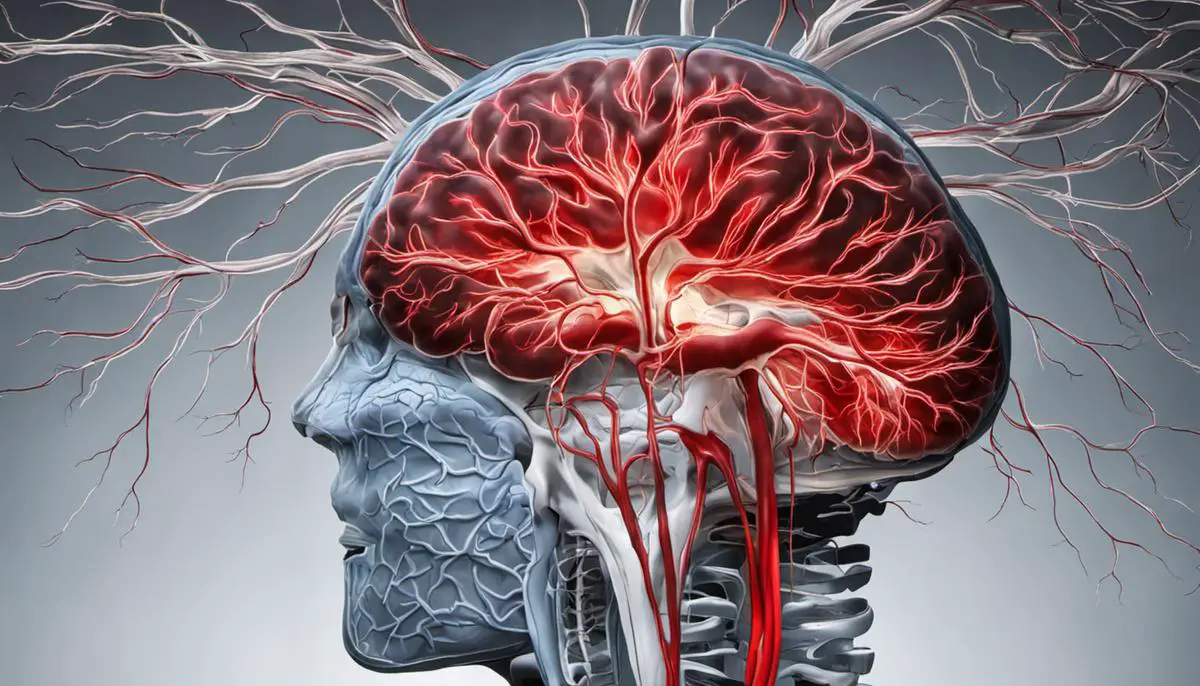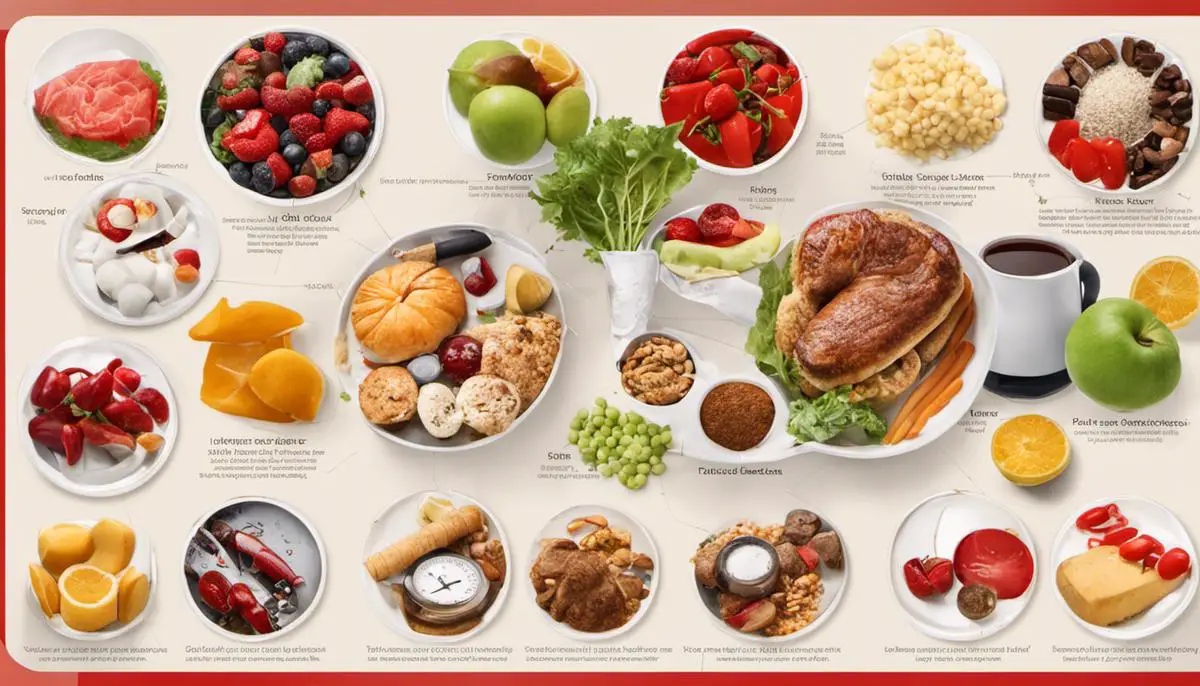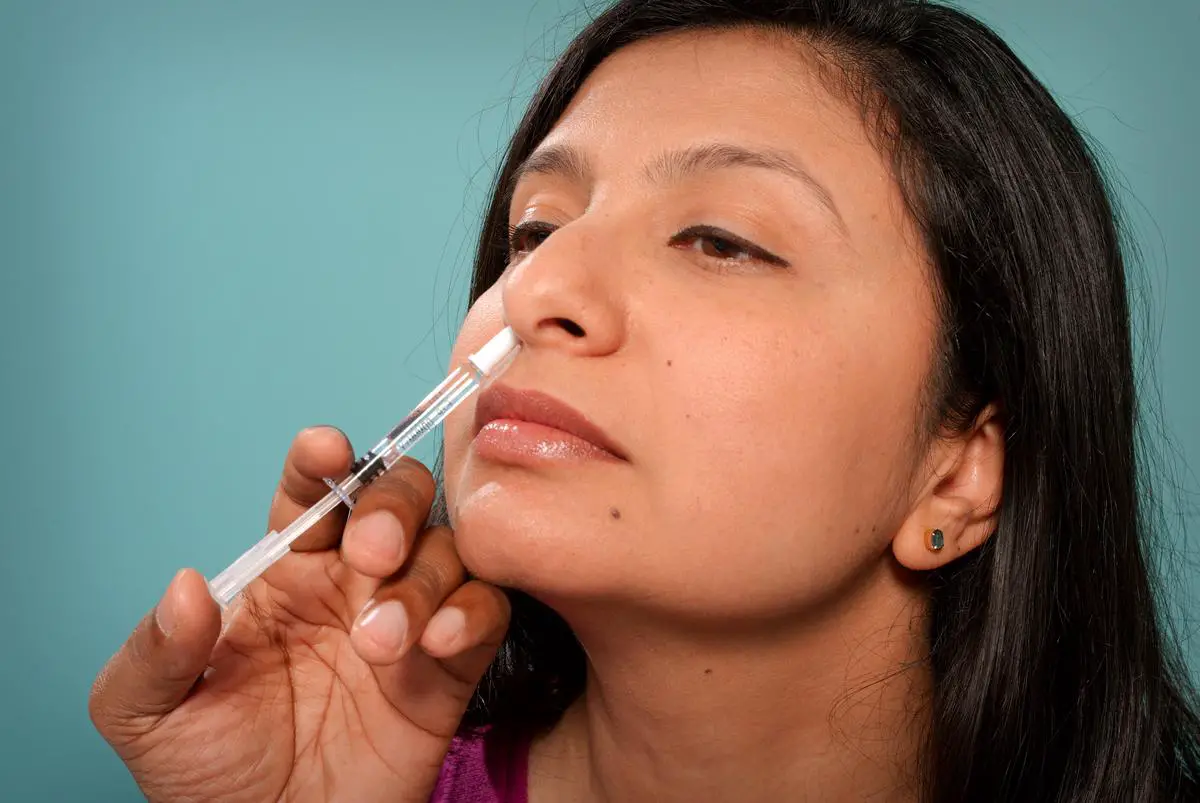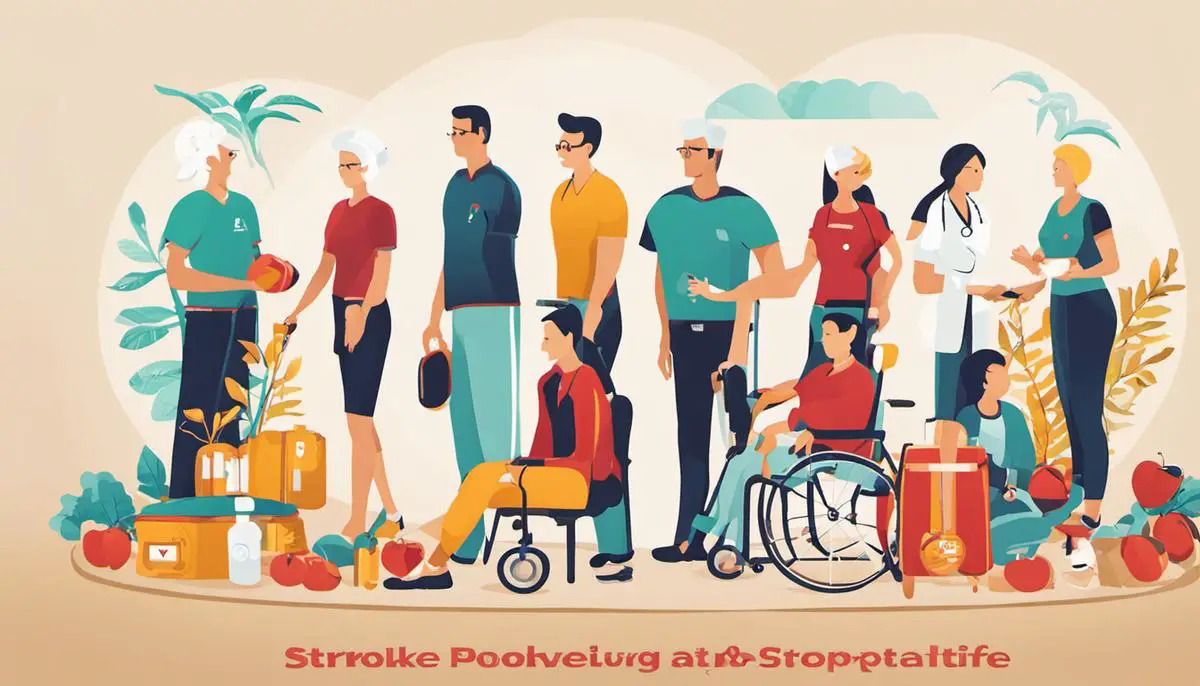Stroke stands as one of the leading causes of death and disability worldwide, yet a significant number of these cases could potentially be prevented through knowledge, behavior modification, and medical intervention. This discourse aims to provide a comprehensive primer on understanding what a stroke is, the imperative of prevention, and the controllable risk factors that influence its occurrence. Furthermore, it delineates the lifestyle habits that promote stroke prevention and how medical interventions play a crucial role in mitigating the risk. Lastly, the unique considerations of stroke prevention in various age groups and genders are dissected, showcasing how targeted strategies could significantly bolster prevention.
Understanding Stroke
Understanding Strokes: A Medical Overview
A stroke occurs when blood flow to the brain is disrupted, depriving brain cells of oxygen and necessary nutrients. Strokes can be caused by a variety of factors like high blood pressure, smoking, heartbreaking diseases, diabetes, and high cholesterol. Risk also increases with age, a family history of stroke, and for those who have previously experienced a stroke or a transient ischemic attack. Notably, men have a higher risk of stroke than women, although women are more likely to die from a stroke.
Types of Strokes
Strokes can be divided into two primary types: ischemic and hemorrhagic. Ischemic strokes, accounting for about 85% of all strokes, occur when a blood clot blocks the flow of blood and oxygen to the brain. Hemorrhagic strokes, meanwhile, are caused by a blood vessel bursting and spilling blood into nearby brain tissue.
Symptoms of Stroke
The symptoms of stroke can occur suddenly and can include numbness or weakness on one side of the body, confusion, difficulty speaking or understanding speech, trouble seeing with one or both eyes, trouble walking or maintaining balance, and severe headache with no known cause.
Stroke Statistics
Stroke is a significant health concern in the United States. According to the Centers for Disease Control and Prevention (CDC), every year, about 795,000 people in the United States have a stroke, and it is the fifth leading cause of death, taking more than 145,000 lives annually. Stroke is also a significant cause of serious long-term disability.
The Imperative of Prevention
The high prevalence and detrimental impact of stroke underline the importance of prevention. Multiple lifestyle changes and medications can help lower the risk of having a stroke. These strike at the risk factors of stroke such as high blood pressure, heart disease, diabetes, and high cholesterol.
Stroke Prevention Methods
Keeping blood pressure under control is one of the most effective stroke prevention methods because high blood pressure is the leading cause of stroke. This control can be achieved by maintaining a healthy weight, regular physical activity, a balanced diet, limited sodium and alcohol intake, and medication if prescribed.
Smoking cessation also reduces stroke risk, as smoking accelerates clot formation, thickens blood, and increases the amount of plaque buildup in arteries. Regular exercise, a healthy diet rich in fruits, vegetables, and whole grains, and a reduction in saturated and trans fat can also contribute to a lower stroke risk.
For individuals with heart disease, managing the condition is essential. Treatments can include medications, procedures, and, in some cases, surgery. Blood-thinnings meds like anticoagulants and antiplatelet agents can prevent stroke in people with specific heart diseases.
Finally, individuals with diabetes can reduce their stroke risk by controlling their diseases effectively through a combination of diet, exercise, and medication. Regular check-ups are crucial to monitor blood sugar levels, as high blood sugar damages blood vessels, increasing the risk of clot formation.
Wrap Up
Alluding to the importance of stroke prevention techniques, it’s key to say that incorporating these strategies can greatly diminish the likelihood of a person encountering this perilous and potentially life-threatening incident. It’s immensely critical that individuals, notably those with an increased risk or those who’ve previously witnessed stroke symptoms, reach out to their healthcare professionals. This would help formulate an effective stroke prevention stratagem that is most suitable for their particular situation.

Modifiable Risk Factors for Stroke
The Correlation between Hypertension and Stroke
One major stroke risk factor is high blood pressure, often referred to as hypertension. Hypertension can inflict damage on your arteries, leading to their hardening and constriction, raising their vulnerability to clot formation. Frequently checking your blood pressure and resorting to regulatory measures when it’s elevated can considerably reduce your stroke risk. Lifestyle modifications, such as restricting sodium intake, alcohol limitation, tobacco cessation, and consistent, moderate workouts, can aid in keeping high blood pressure under control. Moreover, there’s a variety of medications, should these be necessary, designed to regulate hypertension.
Smoking and Stroke Risk
Smoking increases your risk of stroke by damaging your blood vessels, raising your blood pressure, and reducing the amount of oxygen that can reach your brain. The chemicals in tobacco smoke also make blood thicker and more likely to clot. Quitting smoking, or never starting, drastically reduces the risk of stroke. Numerous cessation aids like nicotine replacement therapies, prescription medications, and support groups can assist people in quitting smoking.
Diabetes and Stroke Risk
People with diabetes are at a higher risk of stroke. High blood sugar levels can damage blood vessels over time, making clots more likely. Managing diabetes is essential to reducing stroke risk. Regular doctor visits, maintaining a healthy diet, getting regular exercise, and taking prescribed medications can all help manage diabetes and, in turn, reduce stroke risk.
Poor Diet and Stroke Risk
A diet high in saturated fat, trans fat, and cholesterol can raise your blood cholesterol levels, while a diet high in sodium can contribute to increased blood pressure. Both these conditions can lead to stroke. Conversely, eating a diet rich in fruits, vegetables, whole grains, lean proteins, and low-fat dairy products can help lower these risks. Maintaining a healthy weight through a balanced diet is also important as obesity is another risk factor for stroke.
Physical Inactivity and Stroke Risk
Lack of physical activity increases the risk of high blood pressure, high cholesterol levels, diabetes, heart disease, and stroke. Engaging in regular physical activity, such as walking, swimming, or cycling, can keep you fit and decrease your risk of stroke. The Physical Activity Guidelines for Americans recommend adults get at least 150 minutes of moderate-intensity aerobic activity or 75 minutes of vigorous-intensity activity each week.
There’s enormous potential to significantly dwindle the risk of suffering from a stroke by focusing on variable triggers — such as regular health screenings, maintaining an active lifestyle, adhering to a nutritious diet, and proficiently managing any pre-existing health conditions. These are compelling defensive strategies against the onset of a stroke.

Healthy Lifestyle Habits for Stroke Prevention
Explore the Power of a Nutritious Diet in Preventing Stroke
The potent influence of a well-rounded diet in reducing stroke risk cannot be overstated. It’s essential to include foods that are densely packed with vitamins, minerals, and nutrients — like fruits, vegetables, whole grains, lean proteins — into your daily meals. This alone can considerably shrink your chances of a stroke. It’s just as important to limit intake of processed foods and other items that are typically high in saturated and trans fats, cholesterol, sodium, and added sugars. Regulating portion sizes is a tried and true method of weight management and blood pressure reduction. Furthermore, daily hydration by drinking the recommended quantity of water helps keep the body ticking along as it should and enhances overall health.
Regular Exercise
Physical activity is another important factor in stroke prevention. Regular exercise can help in controlling blood pressure levels and reducing cholesterol, thereby lowering the risk of enduring a stroke. It’s recommended that adults engage in at least 150 minutes of moderate-intensity exercise or 75 minutes of high-intensity activity each week. Activities such as walking, swimming, cycling, or even doing household chores can contribute to the overall exercise time. Before beginning a new workout routine, consult with a healthcare provider to ensure it fits your current health status.
Adequate Sleep
Adequate sleep plays a vital role in maintaining overall health and can mitigate the risk of a stroke. Chronic sleep deprivation can contribute to several health issues including obesity, hypertension, and cardiovascular disease – all factors that increase the likelihood of a stroke. Most adults need between seven and nine hours of sleep per night. It’s beneficial to maintain a regular sleep schedule and establish a good sleeping environment to promote quality rest.
Stress Management
Prolonged stress can lead to high blood pressure, a prominent risk factor for stroke. It’s important to take steps to reduce and manage stress for optimal health. Regular physical activity, maintaining social connections, practicing relaxation techniques such as deep breathing and yoga, and seeking professional help from therapists or counselors when necessary, are all effective stress management methods to consider.
Quitting Unhealthy Habits
Unhealthy habits, such as smoking and excessive alcohol consumption, can significantly increase the risk of stroke. Smoking damages blood vessels, leading to blockages that can cause a stroke. If you smoke, it’s crucial to seek help to quit as soon as possible. Excessive consumption of alcohol, on the other hand, can lead to high blood pressure and atrial fibrillation, both known factors that can lead to stroke. It’s advised to limit alcohol consumption to moderate levels.
Adopting healthy habits and a balanced lifestyle can notably contribute to overall wellbeing and drastically reduce the risk of stroke. Regular medical checkups are a crucial part of staying healthy, as they allow early detection of potential health concerns and provide guidance for maintaining optimal health.

Medical Interventions for Stroke Prevention
Amplifying Stroke Prevention with Medical Intervention
Stroke, being a leading cause of mortality around the globe, underscores the critical need for effective prevention strategies. Medical intervention is a key player in minimizing stroke risk. This includes managing pivotal health indicators such as blood pressure and cholesterol levels, as well as other conditions connected to stroke risk.
Medical Management of Blood Pressure
High blood pressure or hypertension increases the likelihood of stroke by causing damage to blood vessels, leading to blockages, ruptures, or blood clots. Therefore, regular monitoring and effective management of blood pressure levels is an essential preventive strategy to combat strokes. Doctors typically prescribe antihypertensive medications to help decrease blood pressure levels. Commonly used classes of antihypertensive medications include ACE (Angiotensin-Converting Enzyme) inhibitors, ARBs (Angiotensin Receptor Blockers), and beta blockers.
Cholesterol Management for Stroke Prevention
High levels of cholesterol can lead to the buildup of plaques in the blood vessels, narrowing the arteries, and thus increasing the risk of stroke. Regular check-up of cholesterol levels, maintaining a healthy diet, exercise, and medication when required, are all part of a prevention regimen. Statins are commonly used medicines that help lower cholesterol levels. Regular use can reduce the risk of strokes significantly.
Treatment of Underlying Conditions
Certain medical conditions can increase the risk of stroke and warrant diligent management, most notably atrial fibrillation (AF). AF is an irregular heartbeat that can cause blood to collect in the heart and form clots. These clots can then travel to the brain, leading to a stroke. Blood thinners such as warfarin and direct oral anticoagulants (DOACs) like rivaroxaban or dabigatran can help prevent clots and subsequent strokes.
The Importance of Regular Check-Ups in Early Detection and Stroke Prevention
Regular check-ups play a pivotal role in stroke prevention. Not only can they detect abnormalities in blood pressure, cholesterol and underlying conditions, but they also provide an opportunity for healthcare providers to assess individual stroke risk. Identification of stroke risks early can lead to early intervention, reducing the likelihood of stroke significantly. Regular consultation with healthcare providers also allows individuals to discuss any potential issues or symptoms, leading to more personalized preventive measures.
In stroke prevention, medical intervention is crucial and it includes regular health checks, managing high blood pressure and cholesterol levels, addressing underlying medical conditions, adopting healthy lifestyle habits, and taking prescribed medication regularly.

Stroke Prevention in Different Age Groups and Genders
Preventing Strokes in Men
Since men, compared to women, have strokes at a younger age, it’s crucial for them to control high blood pressure, which is the primary cause of strokes. Adopting a healthy diet with low salt and saturated fats, engaging in regular physical activity, moderating alcohol consumption and abstaining from tobacco usage can all contribute to maintaining healthy blood pressure levels. Additionally, men should get regular health screenings for conditions that can increase the risk of stroke, such as diabetes, high cholesterol, and irregular heartbeat, also known as atrial fibrillation.
Stroke Prevention in Women
Women have unique risk factors for stroke. Pregnancy, birth control pills, hormone replacement therapy, and migraine headaches with aura are all associated with higher stroke risks in women. To mitigate these risks, women should maintain regular check-ups with their healthcare provider, especially when planning for pregnancy or when considering hormonal therapies. Lifestyle changes which include cessation of smoking, a healthy diet, and regular physical activity can significantly lower the risk.
Stroke Prevention in the Elderly
As people age, their risk for stroke increases. In the elderly, stroke prevention should focus on maintaining a healthy lifestyle and managing chronic conditions. Age-related conditions such as high blood pressure, high cholesterol, heart disease, and diabetes should be carefully monitored and controlled. Regular exercises, a balanced diet, and smoking cessation are key lifestyle modifications that can lower stroke risk in this age group. Moreover, medication to prevent blood clots may be recommended by doctors for some elderly individuals.
Stroke Prevention in Individuals with Genetic Predispositions
For individuals with genetic predispositions to stroke such as those with a family history of stroke, prevention measures should be more aggressive. They may need to work more closely with their healthcare providers to manage risk factors. This may include the use of medications to control high blood pressure, high cholesterol, and diabetes along with lifestyle changes such as maintaining a healthy weight, eating a balanced diet, exercising regularly, and avoiding tobacco and excessive alcohol. In some cases, genetic counseling may be beneficial to understand risks and develop a comprehensive prevention strategy.
Role of Diet and Exercise in Stroke Prevention Across All Demographics
Regardless of gender or age, maintaining a healthy lifestyle is a powerful stroke prevention method. This includes managing weight, eating a diet rich in fruits and vegetables and low in saturated fats, and engaging in regular physical activity. It is recommended to get at least 150 minutes of moderate-intensity exercise each week. Exercise strengthens the heart and circulatory system, helps control weight and blood pressure, and can help reduce stress.
Importance of Regular Check-Ups in Stroke Prevention
Having routine medical check-ups is important in preventing stroke, regardless of age or sex. Regular check-ups help in early detection and management of stroke risk factors such as high blood pressure, high cholesterol, and diabetes. It also provides an opportunity for individuals to discuss with their healthcare provider any symptoms or health concerns they might have, leading to early intervention and better health outcomes.

Identifying and modifying risk factors, living a healthy lifestyle, and employing medical interventions as needed represents a three-pronged approach to combating the threat of stroke. The understanding that diverse age groups and genders require specialized prevention strategies paints a picture of the nuanced complexity of stroke prevention. However, it also underscores the resounding truth that prevention is not simply a one-size-fits-all approach. It’s contingent on an array of factors from genetics to habits, underscoring its wide-reaching implications on public health. Armed with this knowledge, each of us can make informed decisions and take proactive measures to minimize the risk and forestall the grim possibility of a stroke.
